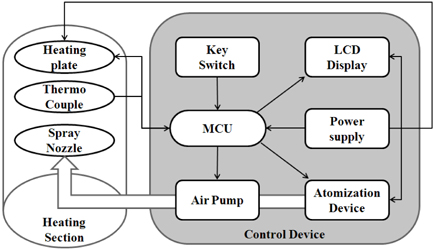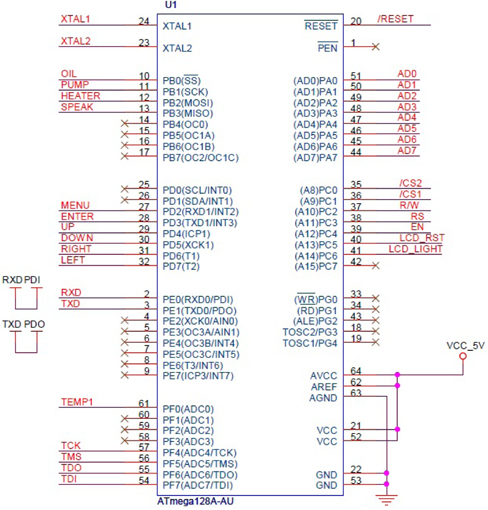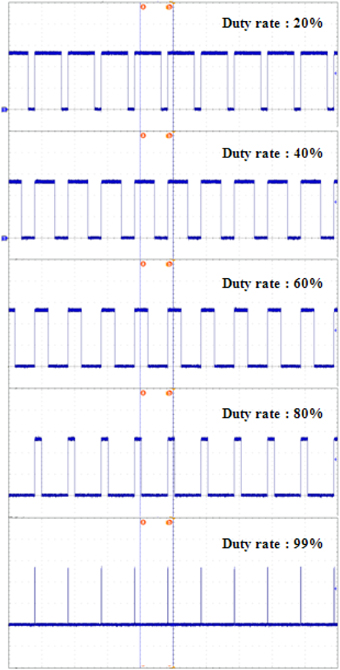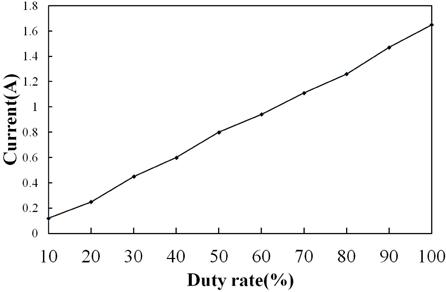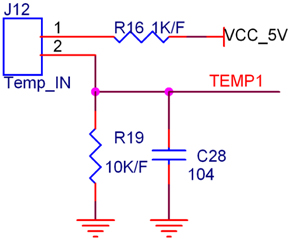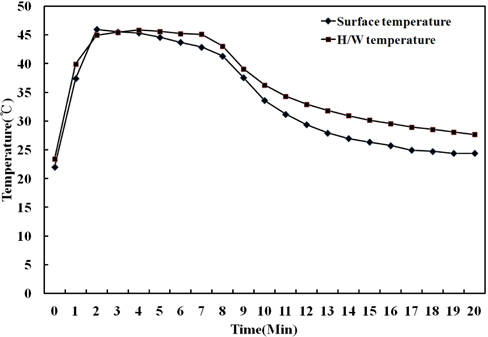



Moxa cautery is a treatment of traditional oriental medicine that treats or prevents diseases using thermotherapy and chemical stimuli [1]. Moxibustion is used to treat or prevent illnesses by using thermal, chemical stimulations generated when artemisia herb or other medicinal materials are burnt on the affected area, also known as the meridian system [2,3]. The moxibustion treatment directly transfers heat generated by combustion to the affected area. The heat generated by moxa extends the blood vessels and boosts blood circulation. However, moxibustion has disadvantages, such as causing severe pain and burning on the skin due to a strong heating stimulus [4,5]. In order to obtain uniform effect and safe treatment, an accurate temperature must be retained. However, the moxa cone used as a heat source comes in various types of material, volume and size [6,7]. Even moxa cones made of the same material can show differences in accordance with density, specific gravity of medicine and humidity. Such differences generate differences in heat, which is the source of stimulation, and also work as a limitation in which it is hard to control the intensity of the thermal stimulation [8,9].
Hence, this study designed and produced an electronic moxibustion device that is possible for heating a deep part, such as the meridian system. It also analyzed the characteristics of the device by complementing burning, a weakness of moxa cautery, and difficulties in controlling the intensity of the thermal stimulation.
With the electronic moxibustion device produced, it is possible to control the precise temperature and treatment hours. Its performance was evaluated based on the thermal distribution used for moxibustion.
Moxa treatment is attached on the diseased area and supplies heat either directly or indirectly. It achieves the thermal effect of the affected area with warmth; treatment is stimulated through combustion products by simultaneously using the moxa cone. The electronic moxibustion device, developed in this study, is composed of a micro-controller unit, which can control the device in a precise manner as well as increase safety.
Moreover, the liquid mugwort extract used to substitute dried mugwort, which can engender several issues including smoke and ash, can be quantified as well. The electronic moxibustion device is composed of a heating section, which can directly transfer heat to the diseased area and the control device. Figure 1 shows the composition diagram of an electronic moxibustion device.
A control device consists of a LCD display showing the current temperature, operation signal and current status, a key switch for entering the operation signals, an atomization device for spraying liquid mugwort and finally, an air pump. The produced electronic moxibustion device controls the overall operation by MCU. It uses ATmega 128AU, which is a CMOS microprocessor. The used MCU controls the overall system based on the signal, which is an input from a key switch. In particular, additional FET (Field Effect Transistor) is equipped for applying heat to the heating plate; a thermo couple composed at the inside of the heating section is designed to maintain the temperature by comparing the feedback signals. The heating plate is designed to be available to control the temperature from 40~90℃ by a unit of 0.1 degree based on signals feedback from a thermo couple. Also, the PMW (Pulsed Width Modulation) control method is applied to control the time required to reach the initial heating temperature as further, the time required for initial heating can be controlled. A heating section is composed of an inner thermal line, a thermo couple that can detect temperature in real time and a spray nozzle that can spray liquid mugwort. A heating section is designed to be 5Φ spherical in order to be applied to relatively larger areas.
Moxibustion treatment includes a direct-heating method to burn the materials directly on the skin and an indirect-heating method to allow some space between the skin and moxibustion as well as not to have direct contact on the skin. Moxa cautery, generally used for clinical reasons, is designed to deliver heat indirectly in order to reduce any risks of burning and side effects. Therefore, a heating plate, used as a heater, is designed to be 0.8 mm apart from the skin in order to provide heat indirectly.
Other than thermotherapy effects, mugwort extract liquid is atomized to be sprayed onto the diseased area in order to provide the clinical effects of mugwort.
Atomization is made with an atomization device, which instantly evaporates mugwort in a liquid state in order to obtain vapor. The atomization device heats the internal coil and evaporates mugwort into a liquid state at 5 V. Then, the evaporated mugwort liquid is transmitted to a heating section using a small pump.
The MUC circuit of the proposed electronic moxibustion device is shown in Fig. 2 below.
The circuit utilizes XTAL of 16 MHz for the operation of MCU and 6 ports of a key switch to PD 2~7 for the operation of the device settings. The actual temperature control is made by PMW signals from a PB2 Port. PMW signals are amplified at FET in order to heat the heating plate, and they are set to have a cycle of 100 us with the ATmega 128 internal timer. PMW signals have a role of controlling the initial heating time and they get turned on/off by signals entered into the PF0 Port. It is possible to control the atomization device for a change to a gaseous state from liquid extracts and the operation of the pump by using PB0 and PB1 ports.
In the case of a moxa cautery, its temperature is set between 40~45℃ for therapeutic effects. By using an indirect treatment method of Gu-Gwan moxibustion, it would take about 6 minutes for a full combustion of the moxibustion stick; moreover, the temperature will rapidly decrease with the stop of the combustion reaction.
This study produced a device of moxibustion treatment that can control the temperature of the heating plate by using the PWM method. Further, it is also possible for the device to shorten the treatment time and a variety of patterns, unlike the conventional thermal effect. A heating plate for the proposed electronic moxibustion device is composed of coil type wire heat within the ceramic structures and its caloric value is varied over the transmitted currents. The temperature control of a heating plate is made with PMW signals generated from a PB2 port of MCU. Figure 3 shows a change in the duty rate of PMW signals from MCU.
The actual thermal effect is made from the internal coils of a heating plate heated by currents made by PMW signals. Changes in additional currents are indicated in Fig. 4.
Thus, an increase in duty rates leads to an increase in currents transmitted to a heating plate and as a result, the therapeutic temperature would be controlled precisely.
The temperature control of the proposed electric moxibustion is operated at a consistent temperature based on temperatures measured at a thermo couple inside a heating section in real time. The thermo couple inside a heating section is designed to generate electric signals of 4~20 mA, based on a change in temperature. In order to link the signals with MCU, these electric signals must be transformed into voltage signals and thus, additional transformation circuits are prepared, as illustrated in Fig. 5.
The operation of a thermo couple is made by providing voltage, which is changed by a change in the current signals made by a change in temperature at J12, by connecting GND to R19 and by providing 5 V to R16 and to FD1 of MCU. FD0 of MCU is ADC (Analog to Digital Converter) and has a resolution of 10 bit. The standard voltage of MCU is 5 V, and a section of 0~5 V is transformed at ADC to 0~1,024 digital values. The transformed digital signals either heat or cool the device if there is a difference in the set up temperature and the actual measured temperature; further, it allows the maintenance of temperature.
In this study, in order to check the operation of the proposed device, the operation temperature of 45℃ was set and the device was operated at full duty. The combustion reaction period for the existing Gu-Gwan moxa is approximately 6 minutes. In this study, treatment time was set such that the electronic moxibustion device could maintain a consistent temperature for 6 minutes [10]. Figure 6 shows the change in temperature of the proposed electric moxibustion device over time.
As a result, the sufficient amount of time is 1 minute 20 seconds for a rise to 45℃, which is the treatment goal set on full duty conditions. It was confirmed to be very shorter than Gu- Gwan moxibustion. Also, unlike the existing moxa cautery, the proposed electronic moxibustion device was found to maintain the clinical temperature (more than 42℃)[11].
There are two methods for a thermo couple used for a heating section; PTC (Positive Temperature Coefficient) of resistance increases as temperature increases and NTC (Negative Temperature Coefficient) of resistance decreases as temperature increases.
The proposed moxa is equipped with a NTC-based thermo couple. Using the Steinhart-Hart equation (1), the temperature of a heating plate can be checked.
In order to check the accuracy of the temperature control of the proposed electronic moxibustion and the actual effect of thermal reaction on the treated area, a change in surface temperature was measured with a K-type thermocouple, which has an error rate of ±0.5℃ at a temperature range of 32℃~300℃, and a digital multimeter (Mprobe co. Ltd, 38XR-A, USA), which can measure temperatures of -20℃~1,300℃.
It is also possible to sense indirect heat, which transfers from the heating plate. Figure 6 show the change in surface temperature.
Surface temperature is shows that patterns of a change in temperature of the H/W sensor, which directly measured the temperature of a heating plate, is almost the same as a change in surface temperature; the surface temperature is relatively low than the heating plate temperature.
In this study, an electronic moxibustion device that provides thermal effects as well as chemical stimulations was developed to allow the quantification of moxa cautery; further, its characteristics were assessed. The developed electronic moxibustion device is composed of a heating section and a control device in order to provide heat and chemical stimulation directly to the treated area so as to secure therapeutic thermal effects.
In order to consistently transmit heat and allow a change in heating patterns in various ways, the current capacity transmitted to the heating plate was controlled by the PWM control method. It was found that a duty rate of PWM signals was controlled precisely; moreover, the current capacity actually transmitted to the heating rate was increased linearly. Features of a change in temperature of the proposed electronic moxibustion device were assessed and revealed. The time required for reaching a temperature of 45℃ was shorter than the existing electronic moxibustion device and further, the temperature could be maintained consistently. More specifically, heat can be transmitted to the treated area quickly and therefore, it is possible to reduce the treatment period and moreover, consistent therapeutic effects could be secured.
The proposed electronic moxibustion device has emphasized safety against thermal stimulations. Therefore, a change in heat transmitted to the actual surface of the treated area was evaluated. The results indicated an insignificant change from the internal temperature which had been set. Hence, it is reasonable to assume that the proposed electronic moxibustion device can quantify the moxa cautery.
